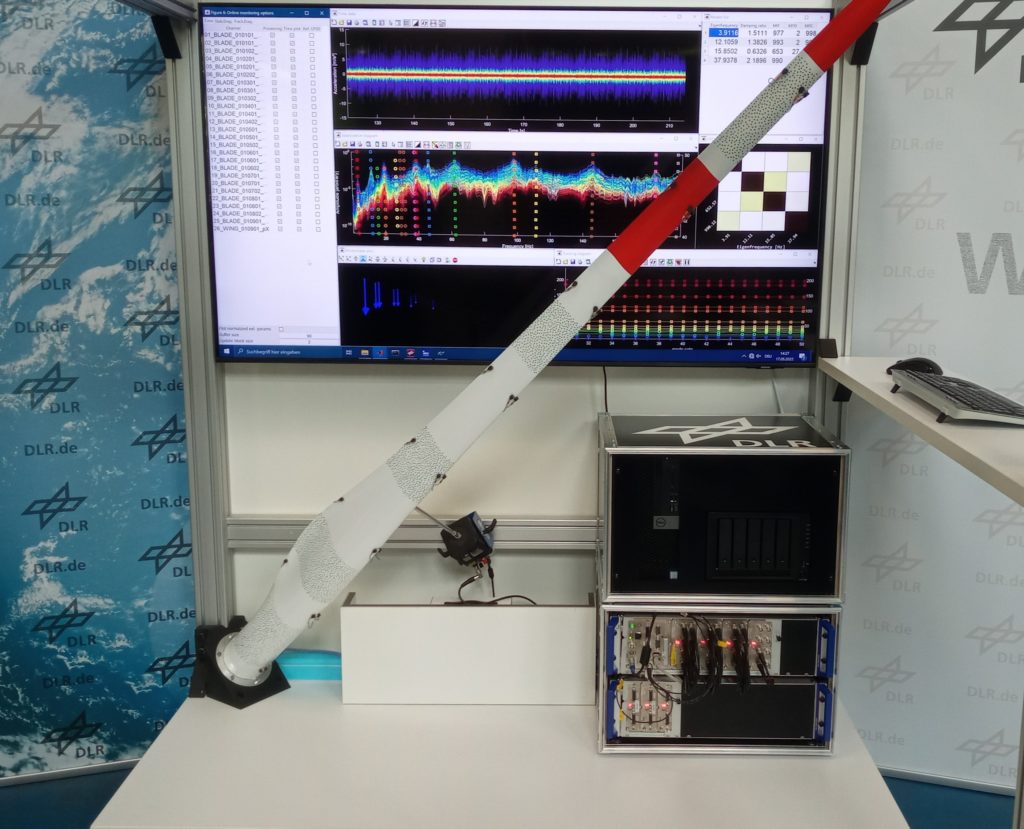What forces act on a wind energy rotor blade?
Rotor blade research at the Krummendeich Wind Energy Research Farm
DLR’s Krummendeich Wind Energy Research Farm (WiValdi), which is currently under construction, will have two large wind turbines. They will be equipped with innovative research sensor technologies, which will mainly be located in the rotor blades and ensures that measurement data is transferred immediately. Rotors can be made quieter, more durable and more efficient in this way.
Rotor blade demonstrator as an exhibit
The demonstrator shows a 2.2-metre-long model of a rotor blade. It resembles the rotor blades that will be used in the DLR Wind Energy Research Farm. A network of acceleration sensors and strain gauges is installed in the blade. The latter determine the internal stress on the material. Depending on what actions the visitor performs on the exhibit, the rotor blade deforms, and the corresponding measurement data is shown on the display. Similar to the rotor blades in the Wind Energy Research Farm, the exhibit also has the latest measurement technology with a thin optical stretch fibre that continuously records all changes in a way similar the human nervous system.
Vibration monitoring
Wind gusts and turbulence can cause the entire wind turbine to vibrate. The behaviour of the blades is of particular interest. The exhibit shows the state of the art in the field of real-time analysis. For this purpose, vibrations and deformations are continuously recorded and evaluated using software developed at the DLR Institute of Aeroelasticity. One particularly interesting parameter is damping. This describes the period of time until the oscillation of a rotor blade stops. From this, insights can be gained into the stability behaviour and service life of the wind turbine. It is also possible to determine whether ice has formed on the rotor blades – important information for shutting down turbines or melting the ice using a blade heater.
Link:
German Aerospace Center (DLR)
Institute of Aeroelasticity
Dr. Yves Govers | Email yves.govers@dlr.de
